Kanha is one of the most famous national parks in India, and it is very popular for tiger safaris. This huge forest area is divided into different safari zones of Kanha. Every safari zone is different from the other. Each zone has its own type of forest, grassland, water sources, and animals. When you go for a safari in the park, the experience depends on which zone you enter. Some zones are located in the core area of the park, and some zones are in the buffer area. Both core and buffer zones give visitors a chance to see wild animals and enjoy nature.
Here, you can get to know about all the safari zones in detail. You can get information about what animals are found in each zone, where the zone is located, and what kind of views and surroundings you can see there. This information can help you understand the park better and plan your safari in a better way.
Explore Kanha With Ease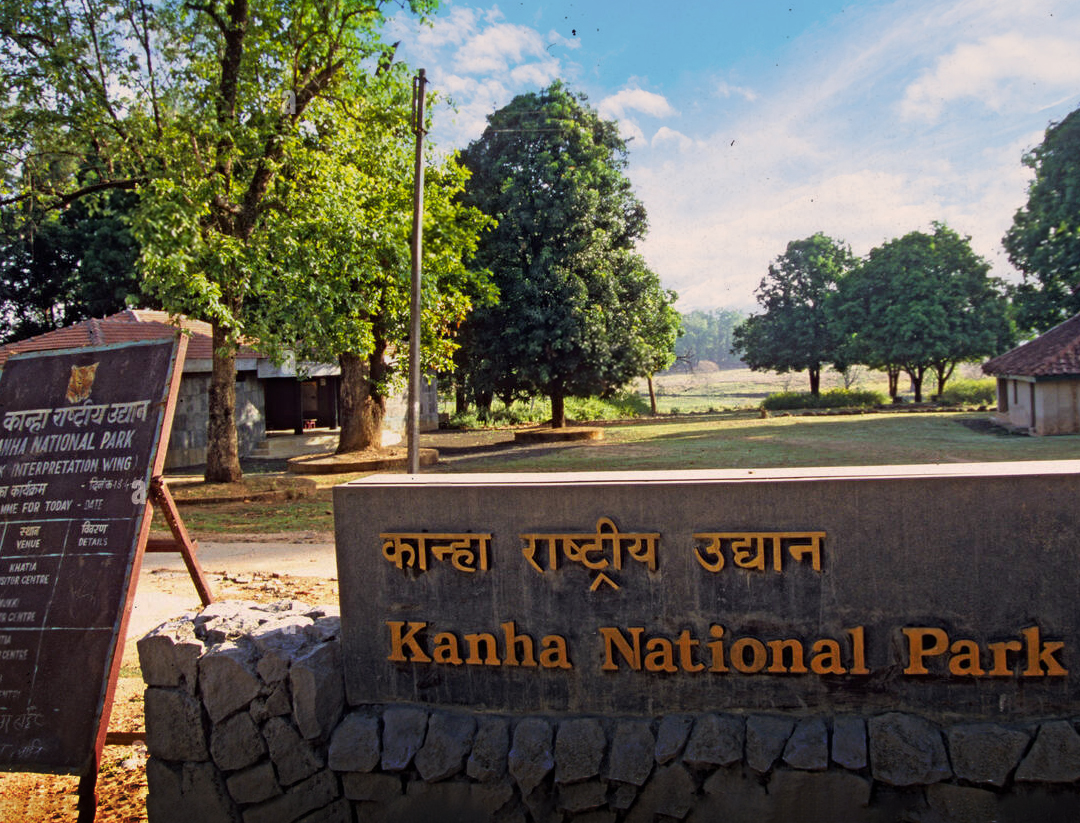
Core Zones Of Kanha National Park
The main areas of a national park are called the core zones. These
zones are inside the heart of the park where animals live in large numbers. Safaris in the
core zones are very popular because there are more chances to see tigers and other big
animals.
The four main core zones in this park are Kanha Zone, Mukki Zone, Sarhi Zone, and the Kisli
Zone. Let us see each one in detail.
The Kanha Zone is the most famous safari zone of this park. This zone is located in the middle region of the park. Many visitors prefer this zone because of its scenic beauty and the high chances of spotting tigers.
The Kanha Zone is also home to the Meadows and Plateau. This large open grassland is the iconic spot of the park where animals can be easily seen, especially in the early morning. Tigers often walk in this area in search of prey, so visitors have a good chance to see them.
Apart from tigers, leopards, Indian gaur (bison), spotted deer, sambar deer, and many species of birds are found here. This zone also has a museum and some historical sites, which make it even more interesting for visitors. Because of its popularity, safaris in this zone get booked quickly, so people should make their bookings in advance.
The Mukki Zone is another important safari zone of this park. It is located in the southwest part of the park. This zone is well known for its mixed landscape that includes forests, grasslands, and rivers. The river in this zone attracts many animals that come to drink water. Because of this, visitors can see a variety of wildlife in one safari drive.
The Mukki Zone is a good place to spot tigers, leopards, sloth bears, Indian wild dogs, and Indian gaur. Since this zone is the meeting point for many animals, the chances of wildlife sightings are good here. The Mukki Zone is very popular among wildlife photographers because it provides natural surroundings with different backgrounds like grassland, dense forest, and water bodies.
The Sarhi Zone is in the eastern part of Kanha. It has a rugged terrain and is different from the other zones. Compared to the Kanha and Mukki zones, the Sarhi zone is less crowded with tourists. Because of this, safaris here feel more peaceful.
One special feature of the Sarhi Zone is that it allows private safari experiences. This means you can enjoy the drive without many vehicles around. In this zone, visitors can see animals like deer, gaur, wild boars, and different types of birds. For people who want a calm experience with nature, the Sarhi Zone is a good choice.
The Kisli Zone is another well-known Kanha safari zone. It lies in the central part of the park and has a beautiful mix of forests, grasslands, and water bodies. Many tourists enter the park from the Kisli gate, so this zone is one of the most visited zones.
Wildlife spotting here is also good. Tigers, leopards, spotted deer, barking deer, sambar, and gaur are commonly seen in this area. The surroundings of the Kisli Zone are very attractive, so apart from animals, people also enjoy the natural beauty of this zone.
.jpg)
Buffer Zones Of Kanha National Park
Apart from the core zones, Kanha also has buffer zones. The buffer
zones are located around the main park area. These zones are also good for safaris, and they
remain open even during the monsoon months when the core zones are closed.
Buffer zones are important because they reduce tourist pressure on the core areas and, at the
same time, give visitors a chance to explore more wildlife. The main buffer zones of this park
are: Khatia, Sijora, Khapa, and Phen.
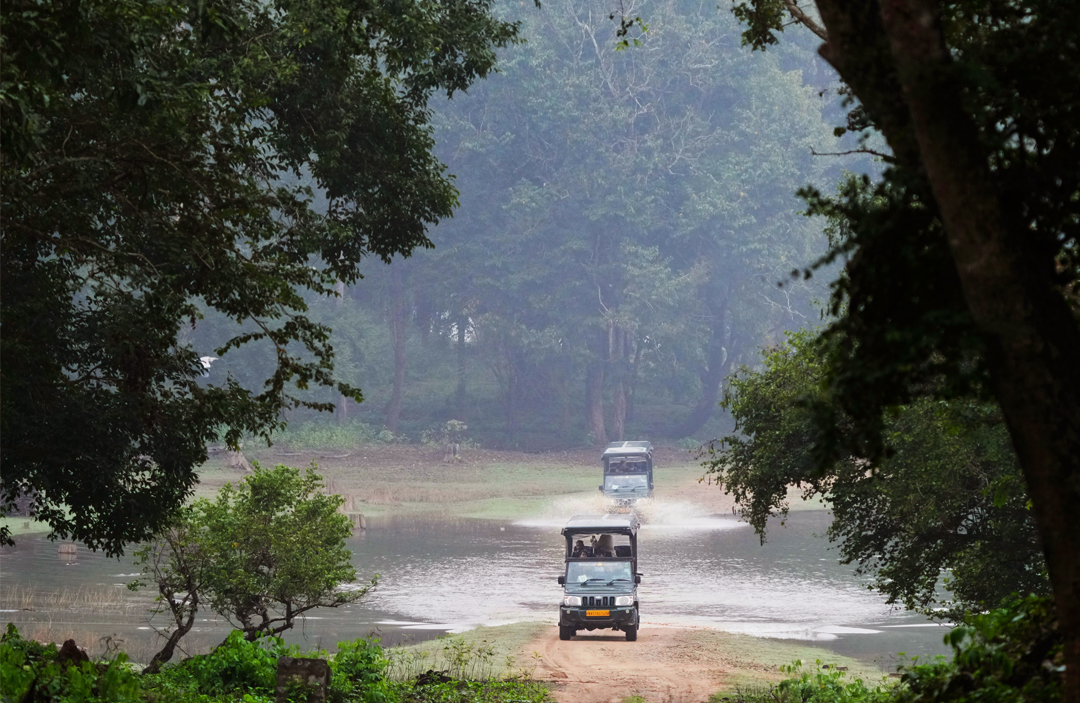
1. Khatia Zone
The Khatia Zone is a buffer zone found at Kanha Park’s southern boundary. The entry gate for this zone is the Khatia gate. Both morning and evening safaris are organized here.
In this zone, animals like chital (spotted deer), sambar, blue bull, gaur, langur, and wild pigs are commonly seen. As the Khatia buffer zone surrounds the Kisli core zone, the chances of sighting the deer and other herbivores are high.
This zone is also special because it allows night safaris. During night safaris, visitors get a different experience of the jungle and can sometimes see nocturnal animals.
Explore Safari Packages2. Khapa Zone
The Khapa Zone is another buffer zone of Kanha. The entry gate for this zone is Mukki gate. This zone is located on the western side of the reserve and is close to the Mandla district.
The Khapa Zone has dense forests and attracts many birds, so birdwatchers enjoy this zone a lot. In terms of wildlife, animals such as chital, sambar, barking deer, blue bull, gaur, langur, wild pig, jackal, wild dogs, and even sloth bears can be found here.
Like the Khatia Zone, the Khapa Zone is also open for night safaris, which adds to its attraction.
Explore Safari Packages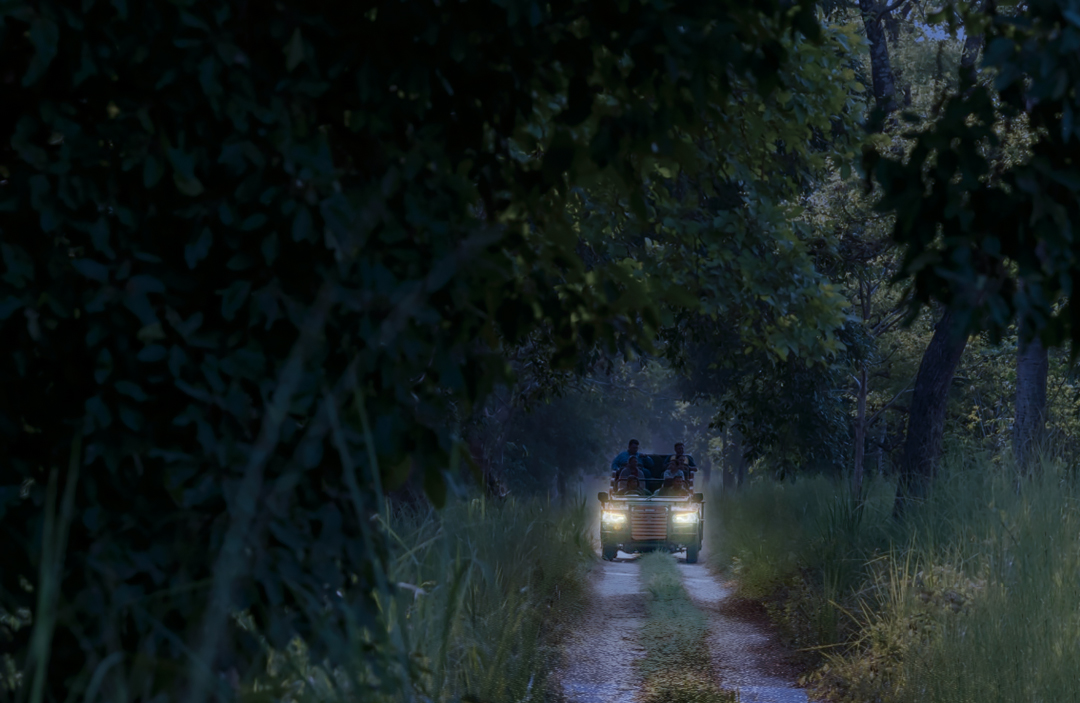
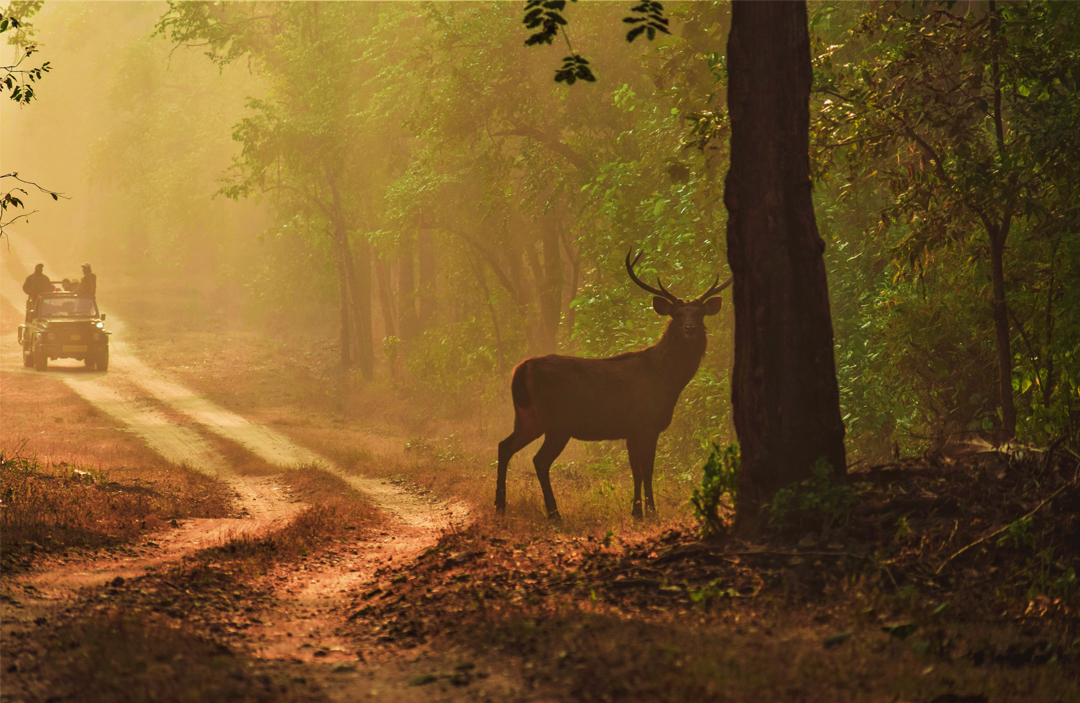
3. Sijora Zone
Another buffer zone is the Sijora Zone that can be accessed through the Sarhi gate. This zone is on the southern edge of the park. It has a peaceful environment and supports many species of flora and fauna.
Animals like chital, sambar, barking deer, langur, wild pig, and jackal are often seen in this zone. Apart from animals, many reptiles and birds are also found here. The Sijora Zone is popular among people who want to enjoy calm surroundings while watching wildlife. Night safari is also available in this buffer area.
Explore Safari Packages4. Phen Zone
The Phen Zone is a little different from the other buffer safari zones of Kanha. It is near Kanha, but it is officially not considered part of the Kanha buffer zone. It is called the Phen Wildlife Sanctuary, which is geographically close to the reserve area.
The entry is through the Ghurri Barrier gate for the morning safari, and for the evening safari, the entry is through the Mukki gate. Visitors can see many animals here, like tigers, sloth bears, gaur, chital, sambar deer, nilgai, and langurs. Even though it is not officially inside the Kanha buffer, many visitors include it in their trip because it gives a similar safari experience.
Explore Safari Packages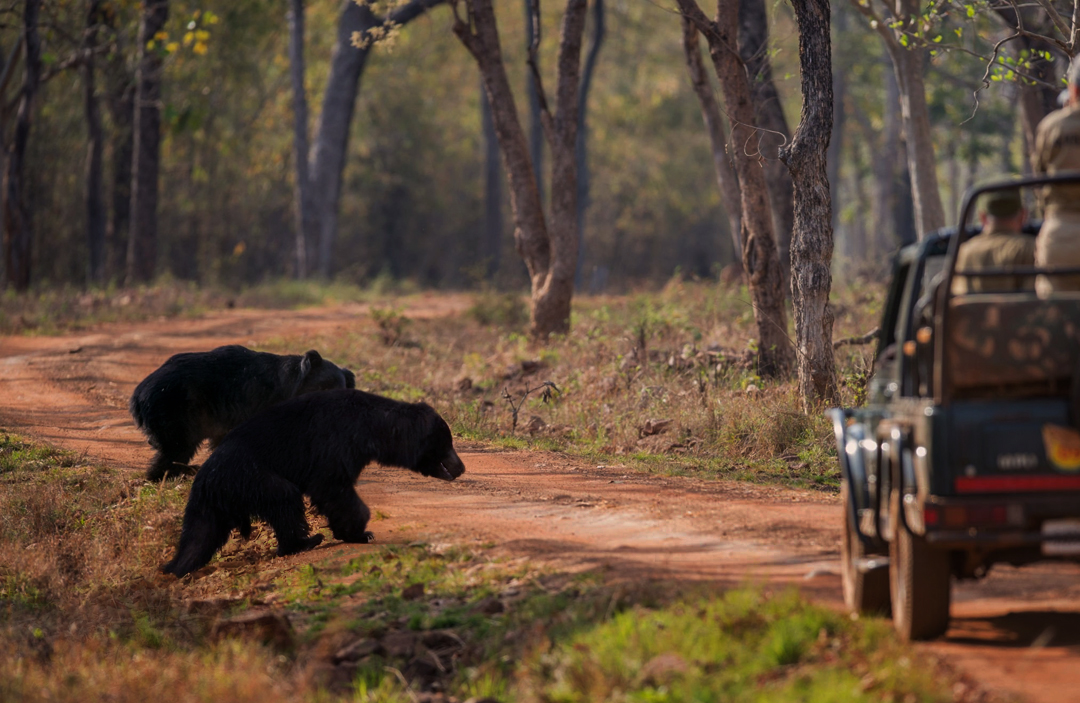
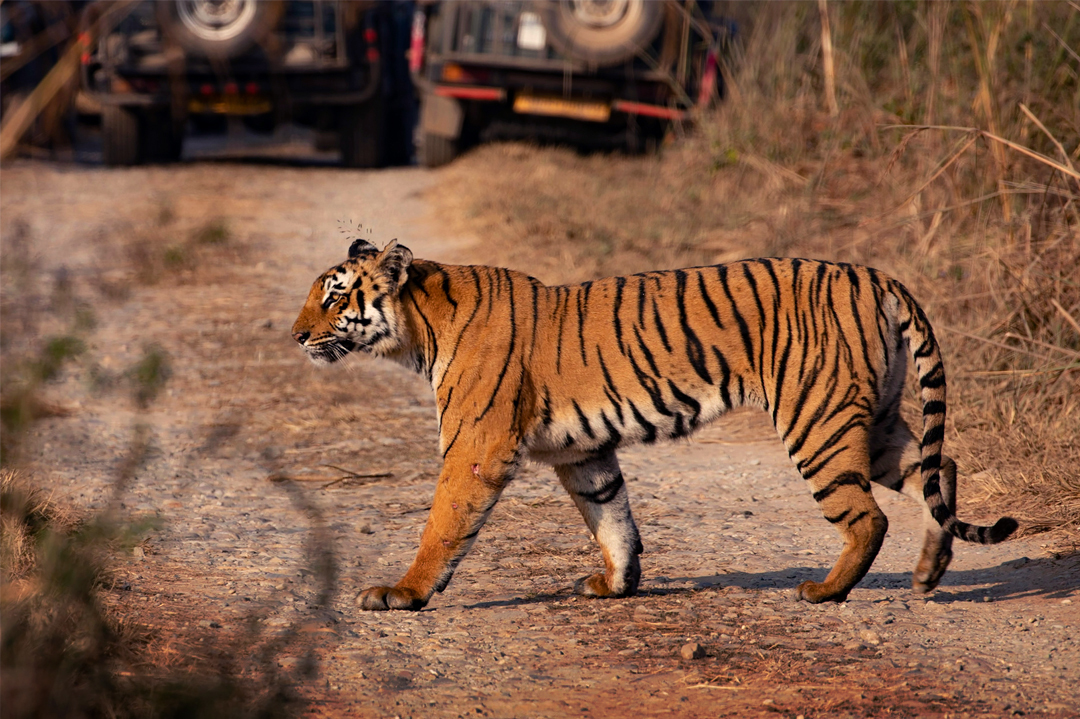
Important Information About Safaris In Kanha
-

In the core zones of Kanha, safaris are not available for all days of the year. The core zones remain closed from July 1st to September 30th every year. This is the monsoon season, and during this time, the park is maintained, and animals get a break from tourist activities.
-

The buffer zones remain open throughout the year. So, even in the monsoon season, visitors can enjoy safaris in buffer zones.
-

Night safaris are available in buffer zones like Khatia, Khapa, and Sijora. However, night safaris are closed every Wednesday.